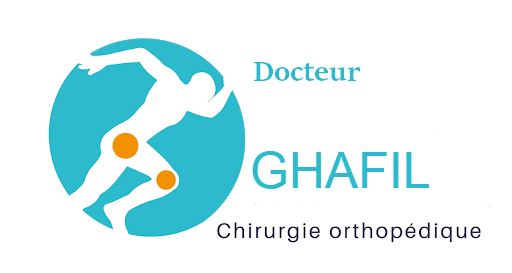Femoral-acetabular impingement syndrome (FAI)
Femoral-acetabular impingement syndrome (FAI)
In FAI, bone overgrowth (called bone spurs) develop around the femoral head and/or along the acetabulum. This extra bone causes abnormal contact between the hip bones, and prevents them from moving smoothly during activity.
Two conditions can be at the origin of this conflict:
• Cam type: the femoral head is not round and cannot rotate smoothly inside the acetabulum. A bump forms on the edge of the femoral head that grinds the cartilage inside the acetabulum.


Bone overgrowth at the head/neck junction
• Pincer type: occurs because extra bone extends out over the normal rim of the acetabulum. The labrum can be crushed under the prominent rim of the acetabulum.

Bone overgrowth at the acetabular rim
The repetition of these premature and repeated contacts can be the cause of damage to the acetabular labrum and articular cartilage, which can lead to the appearance of osteoarthritis of the hip.
Early diagnosis is essential. We now know this condition is a precursor to osteoarthritis. Arthroscopy or arthrotomy (when indicated) are the standard treatments today. The clinical results are reliable if intervention is early, before the onset of osteoarthritis lesions.
The population at risk of developing this syndrome is young adults practicing sports like martial arts, football, rugby, hockey, or dance. In general, all sports that require forced hip flexion are at risk.
The most common symptoms of FAI include pain, stiffness, and limping. Pain often occurs in the groin area.The clinical assessment will reproduce the pain in flexion, adduction and internal rotation.

Position inducing FAI
Imaging will help to confirm the diagnosis of FAI. This include X-rays, computed tomography (CT) and magnetic resonance imaging (MRI). Typically the X-ray will show the bump at the junction between the neck and the head of the femur.

Bone overgrowth at the head/neck junction
When the pain is not relieved with conservative (non-surgical) treatment, surgical treatment may be recommended. This can be done either by arthroscopy or open surgery.

Surgical procedure to remove femoral boneovergrowth

Surgical procedure to remove acetabular bone overgrowth
During surgery, the FAI is corrected by trimming the bony rim of the acetabulum and shaving down the bump on the femoral head.
